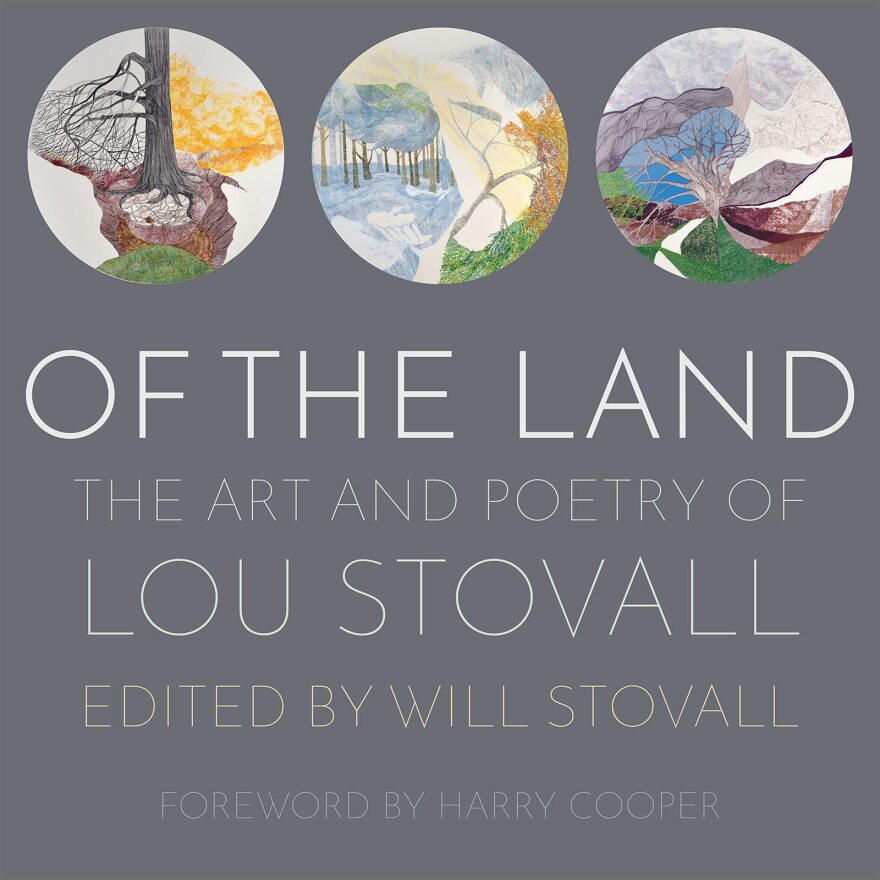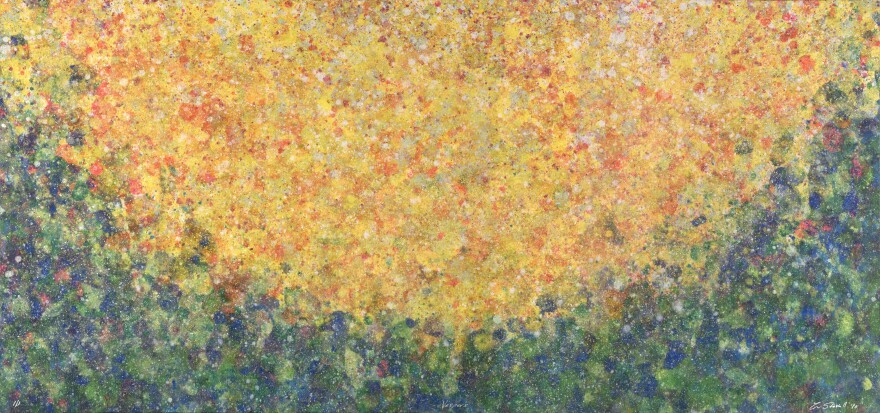Updated February 5, 2022 at 3:20 PM ET
Lou Stovall and I each moved to Washington, D.C. in 1962. Born in Athens, Georgia and raised in Springfield, Mass., he came to study at Howard University. Born and raised in New York, I married into the city; my husband, Lou Stamberg, got a government job here. As newlyweds, we were excited to be in a new place, with the new, vigorous Kennedy administration.
In Manhattan, I grew up among artists and musicians. D.C., a federal city of low white marble Greek buildings and careful bureaucrats in suits and ties, seemed the last place an artist could thrive. That's because I hadn't met Lou Stovall and didn't know about the silkscreens he was making.

Over time, I met Lou: I sat on the PEN/Faulkner Literary Award Board with him for years, bumped into him at museum and gallery openings, and learned about the community of creative men and women who gravitated to him and his artist wife Di for friendship, inspiration and tea (more about that later). They came to get his help to print their often brilliant screenprints.
Lou made prints with and for some major American artists: his hero Jacob Lawrence (known for his "Migration" series, which tours top museums), his neighbor Gene Davis (whose stripe paintings look as if a clutch of rulers got lost in a paint box of primary colors), his close friend Sam Gilliam (canvases dyed and draped along the wall) all came to Lou's studio to make their screenprints. Their collaborations produced extraordinary works.
To sustain such collaborations, the printer needed "to be open-minded, sociable, creative and welcoming, to create an atmosphere where artists can thrive," says Danielle O'Steen, curator of Washington's Kreeger Museum exhibition "Lou Stovall: On Inventions and Color." In his quiet, focused way, Lou is all of that. National Gallery curator Harry Cooper, in his foreward to Stovall's new book Of the Land, edited by his son artist Will Stovall, describes Lou as "a small figure...calm and smiling, Buddha-like amidst the clamor." (That book — a collection of Lou's poems, prints and drawings, is featured in a second show at the Kreeger.)

In addition to creating a community of artists in Washington, Stovall discovered new ways to make silk screens. He first saw it used when he was 15, working as a stock boy — "a glorified errand boy," he says — in a grocery store in Springfield. The grocer sent him downstairs to get something. "I noticed this odor, and discovered an old man printing silkscreen signs." They were small posters announcing what the store was selling. "I just stood there looking, staring, fascinated." He was hooked.
In those days, silkscreen was mostly used for commercial posters. Bold, flat, attention-getting signs — STOP, or SALE. Curator Danielle O'Steen says "he felt silkscreen didn't have to be flat." And so the experimentation began: "He and some artists helped turn it into an art form."
Artists found Lou Stovall to be an indefatigable worker, a true collaborator. He understood what they wanted, got inside their heads, and honored their vision.

In the days before computers and FaceTime, the telephone and post office were part of the partnership. At 85 now, Lou tells the story of how he and Jacob Lawrence got Lawrence's The Burning printed decades ago. It's a landscape, six small white houses in the far distance, their brown rooftops lined with flames. The foreground is framed with rows of spear-shaped leaves in varied greens.
Jacob Lawrence was in Seattle; Stovall in D.C. They mailed colors and proofs back and forth, for the artist's approval. Talking on the phone for hours (with Lou's beloved jazz in the background), unable to see the work together, they counted out leaf by leaf, so Lawrence could say where he wanted slight adjustments in color. "Each print took a while," Lou says.
Here's the tea part I promised. In the early years, Lou and Di Stovall took breaks every day for tea "and some yummy sweet," says Di. Artists and close friends would come. They all knew to be there around Lou's printing schedule. He printed color after color on the same piece of paper. It "took a while." "Four colors at least, before dinner. The third color was before tea time," Di explains. "Then the four or six visitors crowded into our tiny kitchen. No one minded waiting. It was beautiful to watch."
In addition to forging community and discovering new ways to make silkscreen look like watercolor or pastel or oil instead of flat opaque poster color, the master printmaker creates his own art works. Like this one, a technicolor spangle of colors that look flicked onto the page.

If, like Lou Stovall, like me, you believe great cities must welcome makers of art as well as makers of policy and money, you'll see how much Stovall has brought to Washington, D.C. through his hospitality, his technical skills, and the screenprints he makes himself and with others.

Art Where You're At is an informal series showcasing online offerings at museums you may not be able to visit.
Copyright 2023 NPR. To see more, visit https://www.npr.org.









